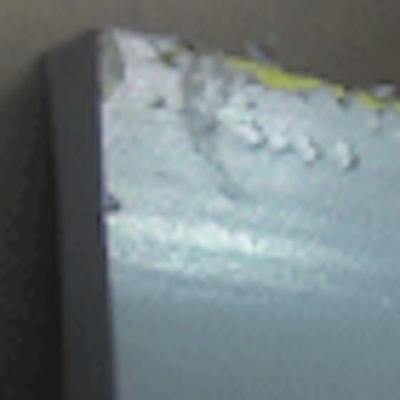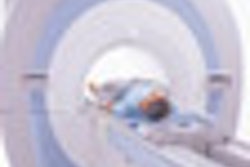
There is growing concern that patients may contract methicillin-resistant Staphylococcus aureus (MRSA) during MRI scans. This concern is based on a combination of highly contagious patients being scanned at MRI centers that lack even the most basic infection control procedures. But an 11-step program that I've developed can help MRI facilities reduce their risk of MRSA contamination.
|
Steps for infection control in MRI
|
The 11 steps for infection control in MRI were written with the assistance of the Infectious Disease Control division of the Joint Commission. This is meant to be a guideline for imaging centers and hospital radiology departments to develop their own infectious disease policies.
It is best to think of these 11 steps as baseline procedures necessary to ensure patient safety from life-threatening infectious diseases during MRI. Each imaging center or hospital radiology department should develop procedures that meet its own specific needs. When writing their procedures, personnel at mobile MRIs should also address the unique concerns of the mobile environment, such as the lack of a sink and running water, necessary for hand washing.
Some of the procedures may not be appropriate for every MRI center. However, having no written procedures at all is an unacceptable situation that relies upon the individual MRI technologist to decide what, if anything, he or she thinks is appropriate. Very few of these technologists have a thorough understanding of infectious disease control. Therefore, a policy that is well thought through will not only protect your patients but will protect your MRI center in case of a MRSA lawsuit. Unfortunately, there is an increasing number of law firms specializing in MRSA lawsuits, and without an infection control policy it would be very difficult, if not impossible, to defend yourself, especially after MRSA was cultured from the pads or the bore of your MRI.
The most common source for transmission of MRSA is by direct or indirect contact with people who have MRSA infections or are asymptomatic carriers. MRSA carried by asymptomatic patients is a major concern for imaging centers; worldwide, it is estimated that up to 53 million people are asymptomatic carriers. Of these, it is estimated that 2.5 million reside in the U.S. Approximately 1% of the U.S. population is colonized with MRSA, and both infected and colonized patients contaminate their environment with the same relative frequency.
The morbidity and mortality of these bacteria are staggering. On average, hospitalizations for the treatment of MRSA versus other infections have a length of stay approximately three times longer and are three times more expensive. In addition, the risk of death is three to five times greater for patients infected with MRSA versus methicillin-sensitive Staphylococcus infections.
Any patient lying on an imaging table could be a carrier capable of contaminating surfaces in the radiology suite. MRSA and other pathogens can live in common MRI table pads and positioners for as long as several months.
At many MRI centers, there exists a false belief that merely placing a clean sheet over contaminated table pads, without actually cleaning them between patients, will somehow prevent the spread of infectious agents. What is most concerning is that very few MRI centers regularly clean their pads even once a day, much less between patients.
In addition, almost all pad sets I have seen in use that are over a few years old are torn or frayed and should have been discarded long ago. It is disgusting to see the terrible conditions of some of the pads that patients lie down on at these MRI centers. Old, torn, and frayed pads are impossible to properly clean and are a breeding ground for bacteria. This is why many of the 11 steps are centered on the pads that come in contact with the patient. For example, using a magnifying glass to thoroughly examine all the seams for tears or fraying and using a black light to check pads for biological contamination are critical to prevent spread of infection. These will be the first things an expert witness will do. However, few, if any MRI centers have adopted even these simple safety procedures.
 |
| Worn out, torn, and taped pads. All images courtesy of Dr. Peter A. Rothschild. |
 |
 |
Another area of great concern is the lack of special procedures for dealing with highly contagious patients, especially at outpatient imaging centers as well as mobiles. These patients are simply put on the table and scanned, and the next patient -- possibly an immunosuppressed child with a sprained knee -- is put on the table directly afterward without individuals cleaning the table, cleaning the pads, or washing their hands. This is a serious situation and infection control procedures must be in place to protect patients.
In the future, do not be surprised if patients request to review a center's written infection control policies or visit the center before their scheduled scans. If there are no written policies, I can assure you that infection control has a low priority at that MRI center.
By Dr. Peter A. Rothschild
AuntMinnie.com contributing writer
November 6, 2008
Dr. Rothschild is co-founder and medical director of High Field & Open MRI of Louisville, KY. He also is the president and founder of Patient Comfort Systems and Image Enhancement Systems, both in Hayward, CA. Since 1988, Rothschild has practiced exclusively in the area of MRI. He helped develop the first commercially available open MRI scanner while at the University of California, San Francisco, and pioneered the clinical aspects of open MRI, edited the first medical textbook on the subject, and has authored numerous medical journal articles about various aspects of MRI.
Related Reading
Sink or swim: Why a hand sink is crucial in the MR suite, March 14, 2008
Joint Commission MR safety surveys: Moving past the fire extinguisher, August 29, 2007
Copyright © 2008 Dr. Peter Rothschild



.fFmgij6Hin.png?auto=compress%2Cformat&fit=crop&h=100&q=70&w=100)




.fFmgij6Hin.png?auto=compress%2Cformat&fit=crop&h=167&q=70&w=250)











